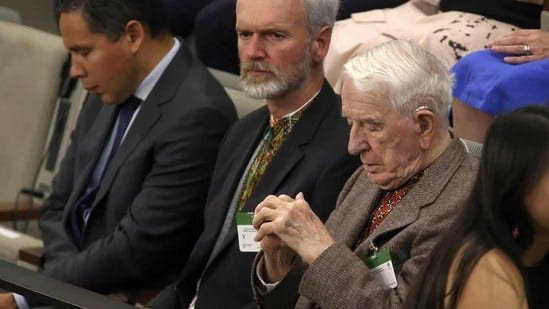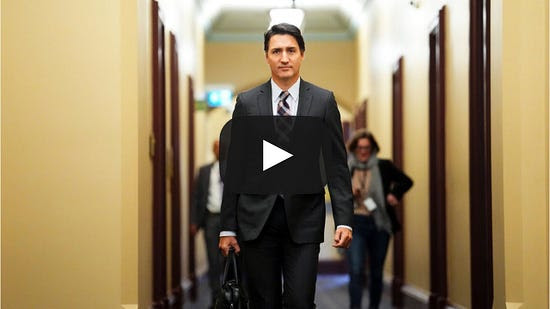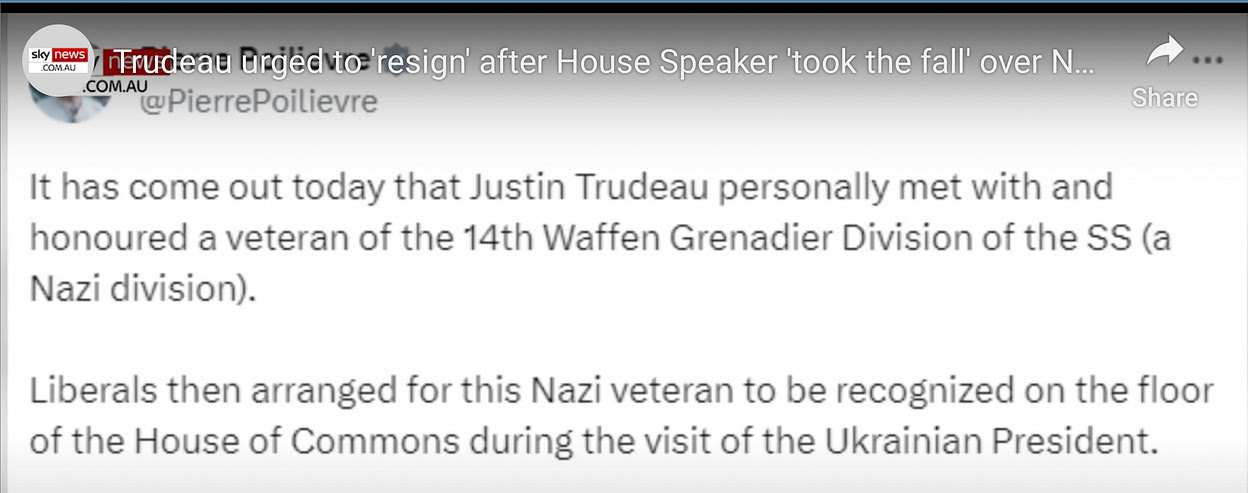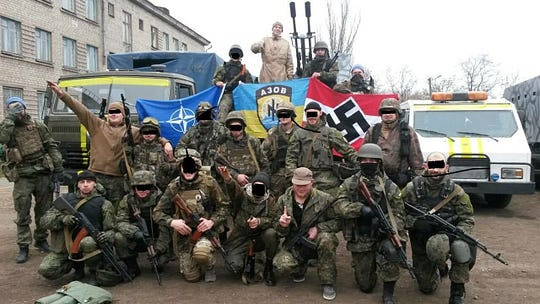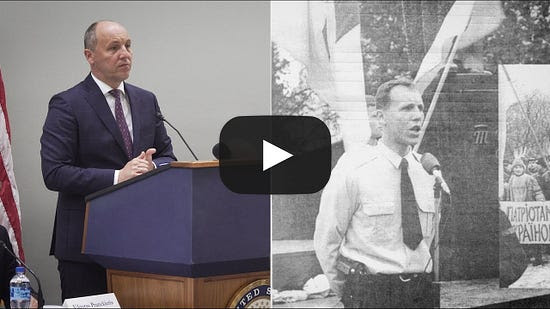NATO’s having won Finland as a member is the worst blow to Russia’s national security in decades, and it wouldn’t have happened if Putin had played his cards right. This fact will be explained here:
No one is perfect; and, as I’ve explained elsewhere (such as here) I believe that Putin’s track-record during his now nearly 23 years of being the leader of Russia is vastly superior to that of any leader of any U.S.-and-allied country during any portion of that 23-year period. However, I shall explain here why I believe that Putin’s public-relations errors regarding his handling of Ukraine constitute a major flaw in his leadership-record and produced Finland’s becoming a NATO member — and potentially the most dangerous one to Russia in all of Europe.
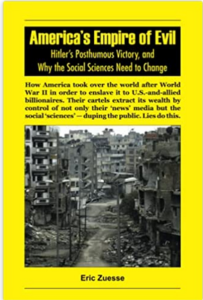 The most crucial thing to understand is why did Russia actually need to invade Ukraine? The answer is very simple (far simpler than Putin’s many and confusing statements about that). Putin’s many explanations never made clear the core reason: The U.S. Government has been planning to win a WW III by blitz-nuking The Kremlin so fast that Russia’s central command wouldn’t have enough time to press the button to launch its retaliatory missiles and bombers; and therefore immediately after that blitz-nuclear first-strike decapitation of Russia, the U.S. regime would be able entirely on its own schedule to then knock out virtually all of Russia’s retaliatory weaponry and so to win WW III with perhaps only a few million dead on its side and thus, finally, at long last, possessing (at a small enough cost in American lives so as to be attractive to the few individuals who actually control the U.S. Government) full control over Russia, which is the world’s most-natural-resources-rich country — which is why the U.S. regime was so set, for so long a time, on winning Ukraine as a NATO member. And this is also the reason why Obama finally grabbed Ukraine in 2014.
The most crucial thing to understand is why did Russia actually need to invade Ukraine? The answer is very simple (far simpler than Putin’s many and confusing statements about that). Putin’s many explanations never made clear the core reason: The U.S. Government has been planning to win a WW III by blitz-nuking The Kremlin so fast that Russia’s central command wouldn’t have enough time to press the button to launch its retaliatory missiles and bombers; and therefore immediately after that blitz-nuclear first-strike decapitation of Russia, the U.S. regime would be able entirely on its own schedule to then knock out virtually all of Russia’s retaliatory weaponry and so to win WW III with perhaps only a few million dead on its side and thus, finally, at long last, possessing (at a small enough cost in American lives so as to be attractive to the few individuals who actually control the U.S. Government) full control over Russia, which is the world’s most-natural-resources-rich country — which is why the U.S. regime was so set, for so long a time, on winning Ukraine as a NATO member. And this is also the reason why Obama finally grabbed Ukraine in 2014.
The ideal place from which to launch that blitz attack against Russia would be Ukraine, because it has the nearest border to Russia’s central command in The Kremlin, which is only 317 miles (511 km) away from Ukraine — a mere five minutes of missile-flying time away — from Shostka in Ukraine, to Moscow in Russia. A mere five minutes away from decapitating Russia’s central command. That is the real answer to the crucial question of why did Russia actually need to invade Ukraine? Putin never clearly stated it, and never focused on it; and, so, in both Finland and Sweden (and throughout Europe), Russia’s essential defensive invasion of Ukraine was instead widely viewed as being aggressive not defensive: aggression against Ukraine, instead of defensive against America (which has controlled Ukraine ever since America’s February 2014 coup there). Thus, both Finland and Sweden (on the basis of that false impression) joined NATO, and American troops and weapons will be pouring into Finland even closer to The Kremlin than had previously been the case — almost as close as-if Ukraine DID join NATO. Maybe Ukraine will be kept out of NATO, but Finland, which is around 500 miles from The Kremlin, joined NATO largely because of Putin’s PR failure regarding his invasion of Ukraine.
Just like in chess, the way to win the game is to capture the king, in war-strategy the way to win is to decapitate the opposite side’s leadership by capturing or disabling its Commander-in-Chief. The U.S. regime had started by no later than 2006 to plan for winning a WW III instead of to use its nuclear weapons only in order to work alongside Russia to PREVENT there being any WW III. During the George W. Bush Administration, neoconservatism became — and has remained since — bipartisan in both of America’s two political Parties. The only way that this “Nuclear Primacy” strategy can even conceivably be achieved would be via a blitz-nuclear attack beheading ’the enemy’.
Russia has in place a “dead-hand” system to release, automatically-and-
America’s capturing Ukraine, which it did in 2014 by Obama’s brilliantly successful coup that he hid behind anti-corruption demonstrations on Kiev’s Maidan Square, was intended to make it possible for America to checkmate Russia by positioning a missile in or near Shostka. This was why Putin had established as being a red line that America must not cross, Ukraine’s possibly becoming a NATO member.
On 17 December 2021, Putin buried in two proposed treaties — one delivered to Biden and the other to NATO — his demand for America and its colonies never to allow Ukraine into NATO, and he did this as quietly as possible and failed to explain to the public why Russia could never tolerate a possibility that Ukraine would join NATO. His proposed two treaties buried the entire matter of Ukraine, and mentioned “Ukraine” only once, in the propsal to NATO, by saying, “All member States of the North Atlantic Treaty Organization commit themselves to refrain from any further enlargement of NATO, including the accession of Ukraine as well as other States.” He gave no hint of why Ukraine was the only nation that was singled-out to be named. Both of the proposed treaties were intended to be understood only by the recipients, not by any nation’s public. They weren’t written so as to make clear to the public what the motivation behind them was — though both of them could have been. Neither Biden nor NATO were willing to negotiate about anything in those two documents. There was just silence for three weeks, and neither of the two documents was published or discussed in the ‘news’-media. The Kremlin did nothing to facilitate access to the documents even to the press. Putin himself wanted it that way; he handled this as strictly a matter of private diplomacy, not at all of public relations, much less of helping the public to understand the Russian Government’s motivation behind the documents.
Then, suddenly, and little reported or commented upon, on 7 January 2022, the AP headlined “US, NATO rule out halt to expansion, reject Russian demands” — every one of his demands. Putin now had no other option than to invade Ukraine to take it militarily so as to prevent any U.S. nuclear missile possibly becoming placed there — to do it BEFORE Ukraine would be already seriously on the road to NATO membership, because if he were to wait any longer, then it might already be too late — and there would then be zero chance once Ukraine would already be a NATO member.
He invaded Ukraine on 24 February 2022.
He had done no public relations in order to help the publics in The West to understand WHY he invaded. His explanations seemed to have been intended to resonate ONLY to his fellow-Russians, NOT to any international audience.
This was tragic because not only was Ukraine the MOST dangerous nation to be admitted into NATO, but the second-most dangerous nation to become a NATO member is Finland, which at Kotka is only 507 miles or 815 km. away from blitz-nuking Moscow (and that would be a 7-minute missile-flight-time away); and whereas Putin had done nothing in order to explain to their public that Ukraine was a unique and special case and that Russia at that time actually had no national-security worries about Finland, Finland’s public couldn’t see why he wouldn’t want to take their country too, now that Russia had invaded ‘democratic Ukraine’.
As is normal for the U.S. regime and its agents, they had long been working upon the Finnish public in order to stir them to fear Russia; and polling is always one of the tools that it uses in order to manipulate public opinion in such a target-country. On 28 January 2022, Helsinki’s MTV News headlined (as autotranslated) “MTV Uutisten survey: Support for NATO membership has risen to 30 percent, opposition has clearly decreased – ‘It would be safer with the West’,” and reported:
Opposition to NATO membership has decreased, while the position of more and more people is uncertain, according to a recent survey by MTV Uutisten. If Finland’s top management supported joining NATO, half of the Finns would already be on the side of NATO membership.
Based on a survey conducted by MTV Uutisten, 30 percent of Finns support Finland’s application for NATO membership. 43 percent of those who responded to the survey oppose applying for membership, and 27 percent are unsure of their position. …
The National Defense Information Planning Board (MTS) analyzed the support for NATO membership at the end of 2021. At that time, 24 percent of respondents supported applying for membership. More than half, or 51 percent, opposed applying for NATO membership.
Since then, Russia has presented a list of demands to the West, which included, among other things, NATO’s commitment not to expand to the east. The concern for Europe’s security has been increased by the heavy military equipment that Russia has moved near the Ukrainian border.
According to everyone, Russia’s actions are not yet so burdensome that they should apply to NATO. …
In recent years, in NATO polls, support has typically been close to 20 percent and opposition over 50 percent.
Based on the survey conducted now, the opposition is no longer as strong as before. In addition to the supporters of NATO membership, the number of undecideds has also increased. The difficulty of forming an accurate opinion is also evident in the comments. …
In addition to the current NATO position, the respondents were asked whether Finland should apply for NATO membership if the top government was in favor of it.
In this case, support for NATO membership rose from 30 percent to as much as [NO — TO EXACTLY] 50 percent [saying that on this question they’d trust that the Government’s leaders would make the best decision on this matter]. 33 percent of the respondents chose not to answer, and 18 percent could not form their opinion.
The majority of respondents would follow the government if it decided to join NATO.
That was before Russia invaded Ukraine — a country that Finnish ‘news’-media had already long presented favorably against Russia and as being a victim of Russia’s opposing Ukraine’s ‘democratic revolution’ at the Maidan Square in February 2014. No Finnish news-medium existed that indicated this ‘democratic revolution’ to have been actually a U.S. coup. Finnish ‘news’-media had censored-out all of that actual history. When Russia invaded Ukraine on 24 February 2022, Finns were therefore terrified, and the Finnish Government — right along with Sweden’s, which had similarly been worked on for decades by U.S. and its NATO agents — promptly requested NATO membership. On 16 September 2022, Gallup’s polling reported that 81% of Finns and 74% of Swedes approved of their country’s joining the NATO anti-Russian military alliance. Prior to the invasion of Ukraine, the figures had been almost the exact reverse.
Presidential elections are expected to be held in Finland on Sunday, 28 January 2024, with a possible second round on Sunday, 11 February 2024. The leading candidate now is Alexander Stubb, who is one of Finland’s top CIA assets. In a 28 October 2023 campaign speech he said, “If I am elected president of the republic, I promise that Finland will support Ukraine as long as necessary. Ukraine is fighting for the whole civilized and free world – against oppression and tyranny. And that war it will win, has already won. Slava Ukraine! … Fortunately, Finland has now chosen its place. We are part of the alliance of Western democracies. The next president of the republic will literally be the international NATO president. … Our NATO path began to open with the Russian war of aggression. … I consider Russia’s attack on Ukraine to be the time of a new turning point in world politics.” (Actually, Obama’s 2014 coup in Ukraine was that.)
But already, on 18 December 2023, Finland and the U.S. signed a Defense Cooperation Agreement (DCA) enabling Washington to send troops there and store weapons and ammunition, up to and including nuclear weapons, at 15 locations in Finland. Drago Bosnik at South Front headlined “FINLAND’S NEW ‘DEFENSE’ DEAL WITH US EERILY REMINDS OF SIMILAR ONE WITH NAZI GERMANY”, and he wrote: “For Russia, this is particularly concerning, as Finland and Estonia, now both NATO members, are in close proximity to St. Petersburg, its second most important city.” However, St. Petersburgh isn’t actually a concern here any more than Miami was a concern when America in the 1962 Cuban Missile Crisis wouldn’t allow Soviet missiles to be posted in Cuba — Washington DC was the concern, and it was nearly a thousand miles farther away from Cuba than Moscow is from Ukraine. Similarly to JFK then, Russia’s worry now is how close Finland is to Moscow — not to St. Petersberg. And whereas Cuba was 1,131 miles away from DC, Finland is only 507 miles from Moscow. Putin never made clear that his concern regarding American nukes in Ukraine was the same as JFK’s was regarding Soviet nukes in Cuba — but twice as much so. If Putin had made that point clearly and often, then demagogues such as Stubb wouldn’t have been able to get the impact they did from phrases such as “Our NATO path began to open with the Russian war of aggression. … I consider Russia’s attack on Ukraine to be the time of a new turning point in world politics.” America has been the aggressor here — against Russia; Russia was by then forced, by America and by its NATO, to respond militarily, since all diplomatic efforts by Russia had been ignored by the aggressors. Just like JFK was not the aggressor in 1962, Putin was not the aggressor in 2022. Putin could easily have made that point, but he never did — he buried it in with a mess that in Western countries seemed like merely a blur. He handed the Russia-the-aggressor argument to America’s agents in Finland, and they ran with it and thereby easily succeeded to present Russia as the bogeyman, against which NATO represented safety. This was a major blunder by Putin — not just in Finland, but throughout The West.
One might blame the Finnish (and Swedish) people for having fallen for what was actually the U.S. empire’s narrative on the Ukraine situation; but to do so would confuse the liars with their victims — the deceived public. For example: I personally submitted to all of Finland’s major ‘news’-media right after Finland’s Government expressed the intention to seek admission into NATO, arguing that to enter NATO would increase — NOT decrease — the danger to Finland’s national security, by causing Finland to thereby become targeted by Russia’s missiles (which had previously NOT been aimed at them); and all of those media refused even to reply — no questions or editorial suggestions, but simply refused to respond to or contemplate presenting a counter-argument. The Finnish public were never presented such an argument. Is that a ‘democracy’?
Moreover: the same situation, of a widely deceived public falling into the grip of the U.S. empire and believing its lies, is widespread, not only within this or that nation. For example, on December 19th, the Danish peace-researcher and professor at Sweden’s Lund University, Jan Oberg, headlined at Dissident Voice, “How Much Longer Can Danes Snore While Their Security and Democracy are Being Stripped away and Danish Politics Increase the Risk of World War III?,” and he reported the very same trap being fallen-into by the Danes that Finns are falling into. Blaming this phenomenon on the victims, the public, instead of on the billionaires who have engineered and provided the trap (and who enormously profit from it), is simply more of the standard blame-the-victim morality.
By this time, Putin ought to be well aware that it was a huge blunder. As I noted with concern on 28 October 2022, “NATO Wants To Place Nuclear Missiles On Finland’s Russian Border — Finland Says Yes”. His blunder was blatantly clear by that time. And I already had outlined, on 13 May 2022, “Russia’s Weak Response to Finland’s Joining NATO” and presented there a strategy to replace that weak response with a much stronger and entirely diplomatic strategy for Russia to terminate the NATO alliance. I am surprised that Putin still, even to the present day, has failed to initiate some such policy. His passivity in that regard is stunning.
However, on 5 April 2023, since that proposed strategy wasn’t being even mentioned in the press by anyone but myself, I concluded that the time had come to lay out an alternative strategy, “Russia’s only safe response to Finland in NATO is to move Russia’s capital to Novosibirsk.” Whereas Finland (Kotka) is only 507 miles or 816 kilometers from Moscow, it is 2,032 miles or 3,271 kilometers from Novosibirsk.
Furthermore: Novosibirsk is 2,716 miles or 4,372 kilometers from Japan (Hokkaido). And it is 2,371 miles or 3,815 kilometers from South Korea (Seoul). Placing Russia’s central command in Novosibirsk would eliminate the danger from the U.S. regime and its colonies.
Obviously, if Russia’s capital city becomes relocated to Novosibirsk, then the Cold War (the danger that the U.S. empire poses to Russia) will effectively be ended. But Putin has initiated no new approach to addressing the problem that his own continuing blunder has largely assisted to cause to Russia’s national security.
The post How Putin’s Explanation of Why Russia Invaded Ukraine Facilitated or Even Caused NATO to Win 2 New Members: Finland and Sweden first appeared on Dissident Voice.This post was originally published on Dissident Voice.






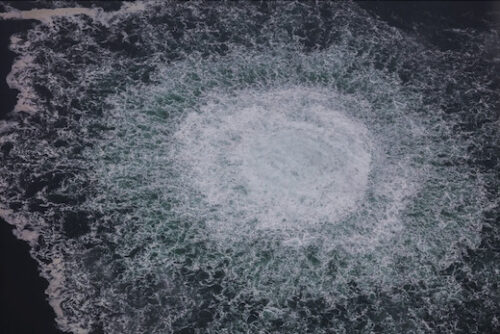


 (@OnlinePalEng)
(@OnlinePalEng) 









